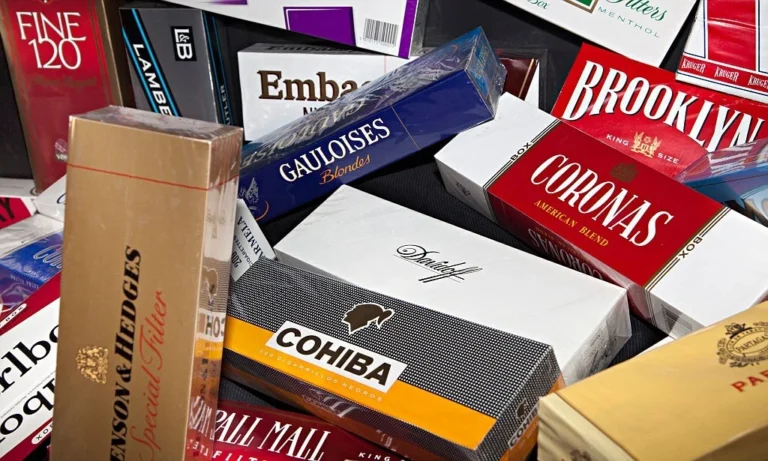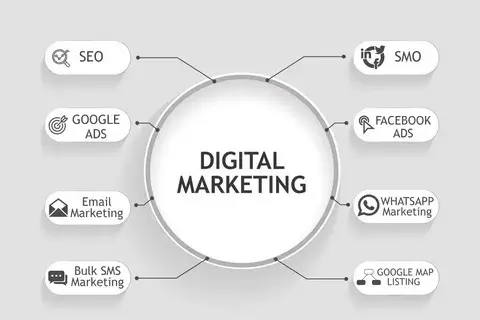The packaging of a cigarette is essentially a branding tool, compliance with safe authorities requirements, and an attractor. Nowadays, apart from consumer habits, rules, and technology evolved and, consequently, have impacted the product development path in the last years. Branding is based on packaging as it creates symbolic and tactile effects of the brand in the mind of the consumer, making a distinctive brand identity. Compliance requirements include warning labels and plain packaging, making every day for coming up with new products relatively difficult. If you want to read more blog like this then visit City Entreprise
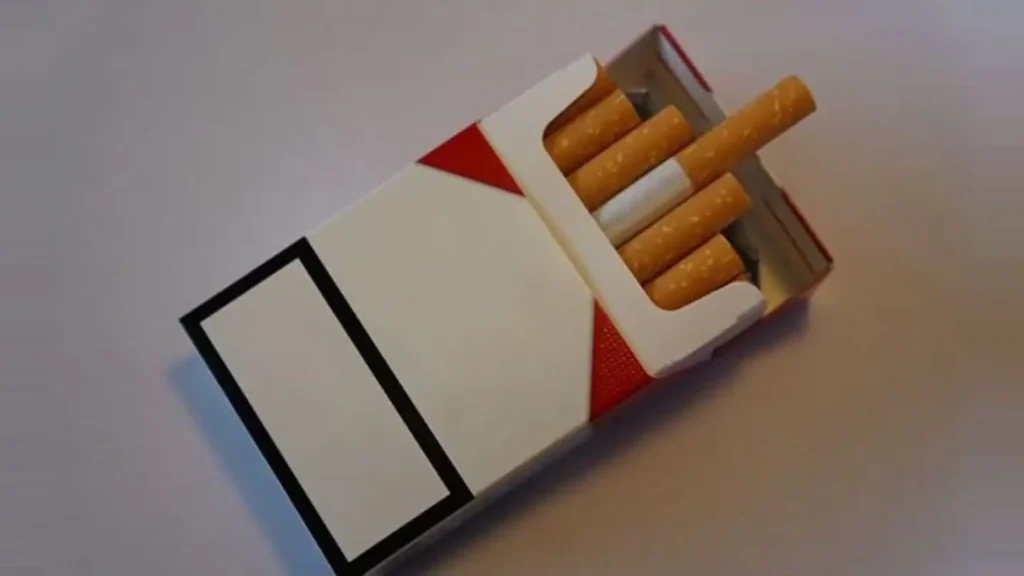
Consumer attractiveness is a securing point of packaging innovation and this includes convenience, sustainability, and experience of the user. Integration of smart packaging with QR codes and RFID tags into packaging plays an interactive role and gives a fight against fake items. The dynamics featured in this segment of the market are the cause of the rate of growth, hence necessitating change to any pattern that in turn guarantees staying relevant and up to date in the industry.
Tobacco Packing in the Industry Grows to Brand Identity and Product Protection
The meaning of tobacco packaging is not only limited to the holding and protecting of the goods; in addition, it contributes to the communication of the brand’s purpose to the customers. It serves a highly diversified position in an industry as it somehow affects one of the most important things from regulatory requirements to customer perspective. The following are the main considerations concerning tobacco packaging illustrating it as a key point.

Environmental Considerations
The integration of green packaging approaches into the industrial trade has been trending among tobacco marketers to reduce the harm to the environment. Eco-friendly packaging materials, recycling package options, and reduced packing waste contribute to their sustainability aims and also meet the expectations of environmentally-conscious customers.
Marketing and Promotion
Although the packaging serves a primary function of promoting the product, it also plays a secondary role in providing marketing space for new products or limited editions and ad campaigns. Numerous issues, including spectacular packaging designs, enticing branding attributes as well and seasonal packaging variations attract consumer attention not only to sales dose but also these issues support marketing efforts.
Protection and Anti-Fraud Steps
Safety labels and anti-copying features are incorporated into the product to ensure the safety of consumers and brands who are against copycat products. tamper-resistant seals, exclusive identifications, and authentication tools may serve to verify the product’s authenticity creating more trust for the consumers.
Product Protection and Preservation
Packaging provides protection that is needed for cigarettes from physical damage, humidity, and contamination while being carried from the manufacturer to a participant. Good packaging doesn‘t just design the wrapper right but also chooses appropriate materials to make sure that foods keep their freshness, quality, and integrity from storage to transportation, leaving the consumers with a satisfying experience while using the product.
Brand Identity and Differentiation
Packing is a key element in a manufacturer’s exploration to create a brand personality for the market and set itself apart from other similar products. The utilization of signature and specific packaging designs helps tobacco companies to illustrate their brands, become difference-makers among competitors, and get a good market reputation.
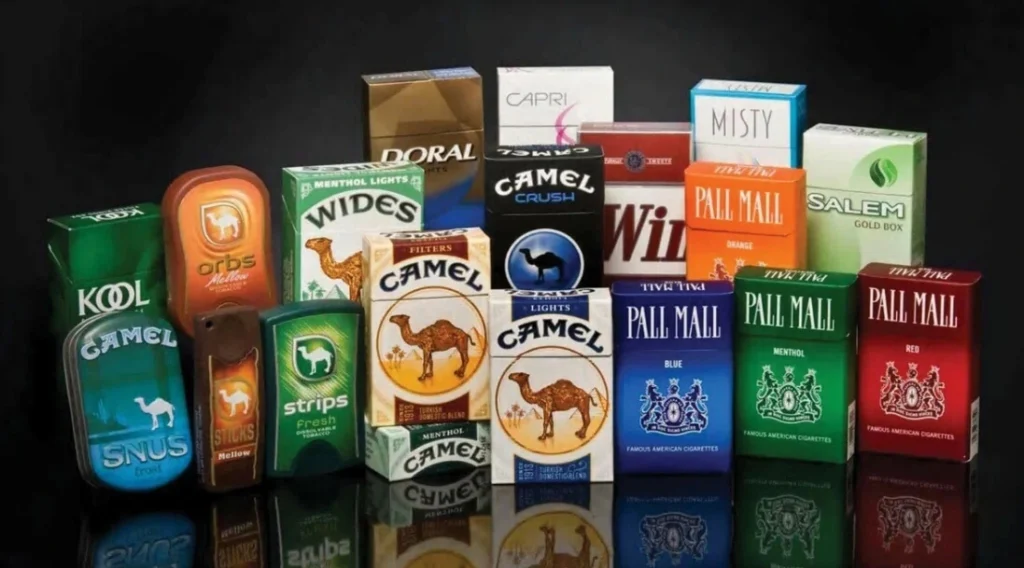
Consumer Information
Similarly, packaging acts as a communication channel whereby it provides the product labels with important details such as product variants, nicotine levels, and product characteristics. It provides the right production of labeling and packaging, therefore, customers can identify the contents and attributes of different tobacco products, and freely make an informed choice.
| High-Level Benefits | Low-Level Benefits |
| Due to packing, manufacturers can create the specificity that they need and make the brand distinguishable in the competitive market environment, creating unique identities and attracting specific audiences. | Good and clear labeling helps consumers know the product better by getting essential information about its existence, benefits, health risks, or ingredients. |
| Effective packaging guarantees that manufacturers’ products meet the best standards set by laws, labels, and health warnings. | Due to its deep involvement in cost-efficiency concerns, packaging has grown to be a financial burden for both producers and consumers. |
| Adoption of recyclable packing materials and practicing will further include environmental impact and meet the customer’s need for eco-friendly products. | Tobacco goods are kept safe from environmental factors that reduce their freshness and quality, such as light, humidity, and physical effects, with the use of packaging. |
| New package design increases consumer involvement and care, which is a significant success factor for earnings and winning over the market share. |
Packaging Management in Tobacco Packing The Head of the Design Project
Tobacco packaging would productively manage processes like designing that give unique, impartial, and beautiful packaging solutions. Here’s an overview of the key steps involved in the design process within tobacco packaging.
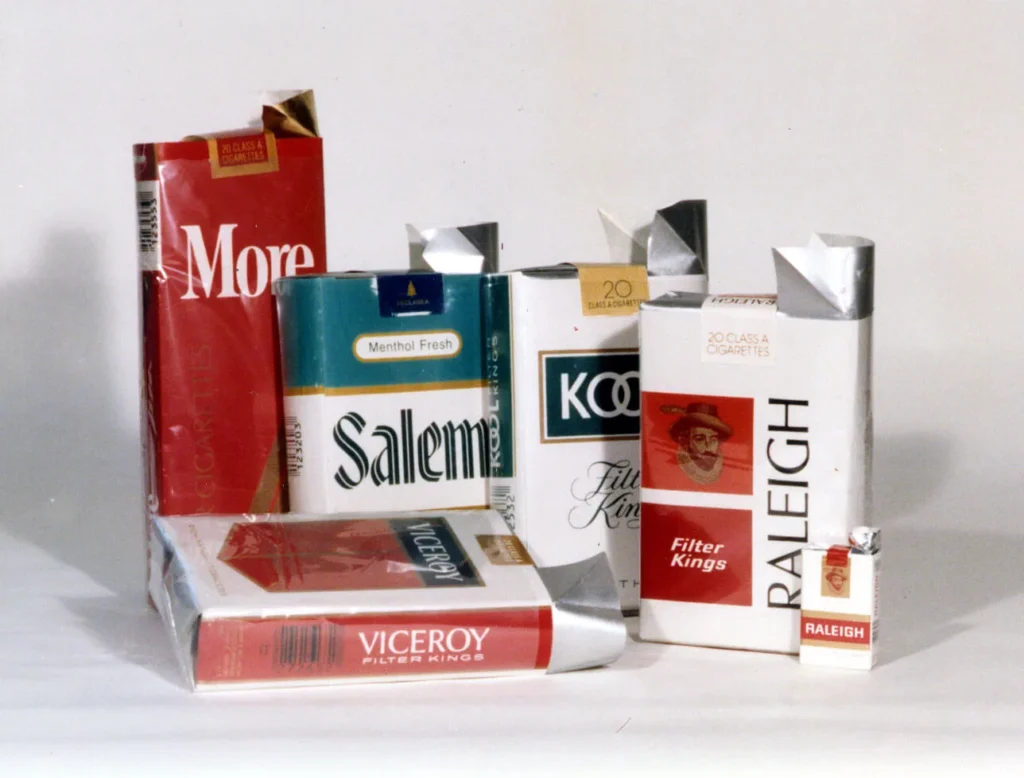
Research and Analysis
It is important to know the current tendencies in the market, the consumers’ tastes, and buying behavior related to tobacco products and packaging. The idea is to be familiar with regulatory provisions that govern the packaging across the world, such as health warnings, prohibition of branding, and the type of packaging materials.
Conceptualization and Ideation
Creating self-explanatory packaging and concepts with the help of market trend research. Control of customer perspectives after such exposure.
Prototyping and Testing
Implementing the generation of packaging designs so that they are easy to visualize and display and have the best functionality. User testing, product feedback, and reviews from our target consumers to appraise the practicality, as well as, product sensitivity and effectiveness.
Design Refinement
We are updating packaging designs using feedback from customers and findings from the usability tests. Improved packaging will feature my Design Objectives. The addition of updates, revisions, or tweaks to good user experiences, and strategies that meet the regulatory standards in compliance with brand expectations.

Through Material Selection and Sustainability Integration, we will develop products that promote a healthy and sustainable lifestyle for the benefit of both individuals and communities.
Contemplating good quality materials that are sustainable in terms of durability and environment. Underpinning everything is the phrase “go green,” which can be achieved by examining different eco-friendly packages, recyclable materials, and advanced packaging technologies to minimize the negative impact on nature.
Let’s examine the applications of these components. We can effectively convey your brand message and make a lasting impact on your clients by utilizing the power of graphic design. We can design an identity that embodies your distinct brand personality by carefully combining text, Color, and shape.
Doing creative work such as label and packaging designs will not affect the communication and branding elements. Ensure the effective communication of product information, Health Warnings, and brand messaging on the Package while making it visually appealing.
Collaboration and Coordination
Working with multidisciplinary teams including designers, engineers, regulatory, marketing, and other professionals to bring alignment among design and Requirements. Assuring effective communication, feedback, planning, and decision making as well as shortening time and several iterations to allow for a streamlined design project.
Compliance and Legal Review
Conducting a proper review of packaging designs to make sure that all the directions and regulatory requirements are met, for example, having health warning Placement, text size requirements, and limitations of branding characters. Engaging others who are experienced in law or regulation to make sure that the reputation is protected through legal validity and risk mitigation.
Production Implementation
We would also finalize into production the mass production of the approved designs, which takes into account Feasibility, quality control, and production costs. Also, work closely with manufacturing partners or in-house production teams to manage the growth of package design from design to the production team to ensure consistency.

Continuous Improvement and Innovation
Watching releases in the market, Customer Feedback, and the introduction of new technologies helps to identify further areas of ongoing improvement in tobacco packaging and potential for innovation. Surveying or continually adjusting with strategies, materials, and features to remain head and shoulders above the rest who are also tackling existing and new challenges, and meeting their evolving consumer needs.
Types of Tobacco Packaging
Tobacco product packaging has many forms, with every type purporting a set role and which is often regulated by government regulations tailored towards the promotion of public health and the weakening of smokers. Here are some common types of tobacco packaging.
Traditional Packaging
Among these are the traditional appeals such as the package specifically designed for cigars, and other tobacco products before the passing of plain packaging laws. Traditional packaging methods in most cases focused on having the branding features prominently displayed such as logos, demarcation of color, and promotional visuals which the designers intended to make the products attract the consumers and differentiate the products in the market.
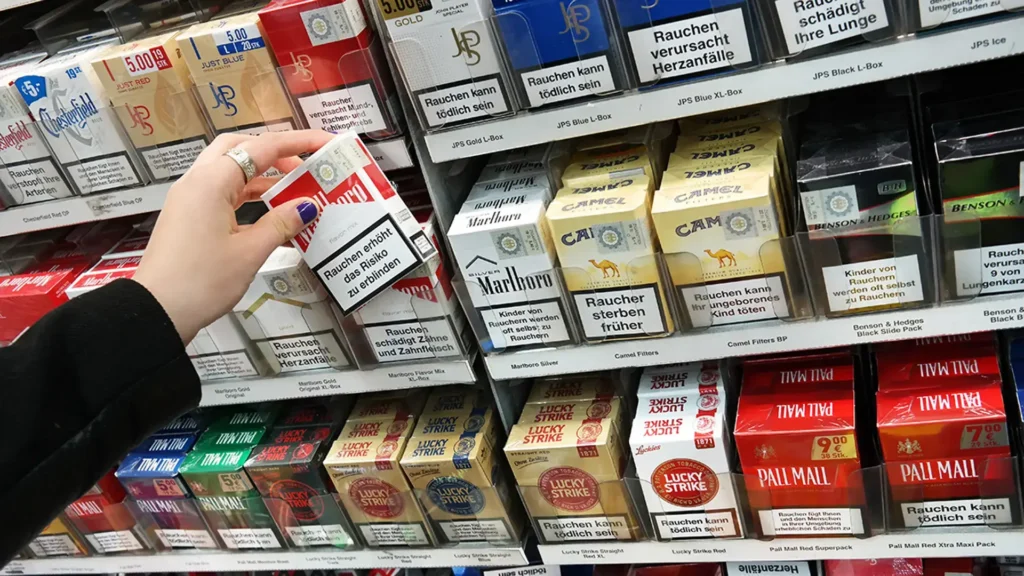
Plain Packaging
Plain and standardized packaging are terms for regulatory methods intended to be used when packaging tobacco products. In this method, there are no branding or promotion elements displayed on the pack method the packing colors, fonts, and everything else will be uniform looking. The goal is to help reduce the likability of tobacco products, especially to young people, and increase the visibility and influence of health warnings. The simple package can be defined as carrying the most dominant health warning graphic and at the same time distributing information about the health consequences of smoking.
Graphic Health Warnings
Graphic health warnings are big, striking images from which these effects of smoking reach the eyes, accompanied by text messages. These warnings are frequently mandatorily defined by many countries and are one of the primary principles of plain and traditional packaging. Cautionary messages about the dangers of tobacco smoking aim at education about consumption by exposing its dangerous effects and preventing smoking/inhaling tobacco products.
Slip Packs
Smoke plugs are a type of paper and sometimes plastic packaging that is predominantly used for cigarettes and other cigarette-like products. They are cardboard or paper sleeves that fit around the cigarette packages with inscriptions for health warnings, regulatory info, or advertisements. Due to this, they serve more than one aim. The foot pack is the most frequently used to be in compliance with packaging regulations and simultaneously keep the inner pack with some aspects of the brand.
Foil Wrapping
Foils are commonly used to wrap cigars and look for types of tobacco products. This aspect of the process is about wrapping the tobacco in a foil wrapper or pouch which helps preserve freshness, moisture, and aroma. Foil packaging often has a brand element printed on it too but the regulations about the branding of cigar packaging may vary from one country to another

Tin Packaging
Tin represents a classy element of tobacco packaging for snuff, or chewing tobacco types. Normally metals are used to craft tins and these are intended to be strong and reusable. They either include brands, products, or decorations aiming at the exquisite end of the market and premium buyers.
Soft Packs
The soft pack is one kind of package commonly used for cigarettes and it is made by rolling paper or cardboard into a flexible foldable pack. Contrary to a hard pack which has structural rigidity, soft packs are more compressible and portable as they can be tucked into a pocket or bag. Soft packs can have implemented branding features and health warnings which may be essential according to some regulations to reach the required standards.
Bulk Packaging
Bulk packaging involves tremendous amounts of tobacco products that are packaged in big boxes or hand rolls (cigarette bundles). In bulk packaging, there are situations when producers of tobacco use it in wholesale & distribution channels such as retailers and consumers who buy tobacco products in bulk quantities. As regulatory requirements of bulk packaging can include labeling, health warnings, and tracking tools to deter illegal trade, they may be included in this part.
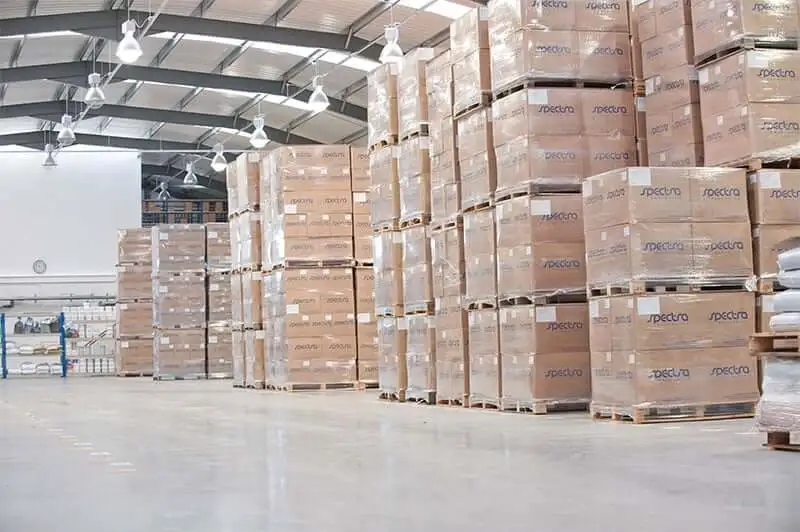
Real-World Applications
Retail Shelves
It is common to see cigarettes and other tobacco products at the point of sale at supermarkets, convenience stores, and even specialty tobacco shops. For a business to stand out from the multitude of competing products on supermarket shelves and attract the attention of consumers, its packaging must be attractive.
Online Sales
In such cases, many tobacco companies package their products in attractive raised
cartons that are not only appealing but also tough enough to bear shipping and handling in online sales.
Specialized Tobacco Stores
Tobacco boutiques are specialized retail outlets that usually focus on users and connoisseurs, providing exclusive and premium packaging alternatives. The stores can create collectible limited edition packaging, or labeling that showcases the products. They can also partner with street artists for collaborations.
Marketing and Branding Events
Tobacco companies often resort to special events, sponsorships, and activities that promote their products. Innovative and special packaging is critical in these markets to create strong impressions as the brand experience.

Compliance with Regulations
Packaging is the key to meeting regulatory requirements; manufacturers need to use it to include warnings, age restrictions, and regulating packaging in some areas regarding plain packaging and trademark elements.
Upcoming trends Impacting the future of tobacco packaging
The progress of new tobacco packaging types manifests itself in the diverse community of customers, education in tobacco control, as well as in technological advancement. The following are significant changes in tobacco items packaging.
Smart Packaging
Technology and smart packaging integration are some of the most substantial achievements of modification technology. It covers the areas that involve AR elements in the packaging, QR codes for getting information about products, and also NFC tags which are used in authentication and monitoring the value chains.
Sustainable Packaging
Along with that, an emerging trend in tobacco packaging is seen in the form of repackaging products in sustainable packaging. Consumers now, due to this growing awareness, are increasingly advancing, which makes the need to create eco-friendly retailer practices. It refers to the use of biodegradable materials, recyclable packaging, and reduced packaging waste which consequently include biodegradable materials like paper, wood, cotton, and other fabrics.
Health-centric Designs
With a rising consciousness around health gaining momentum, witness the inclusion of health in package designs to attract those who are conscious about their health. A major component of new regulations aims at warning labels that are going to be both larger and more prominent, as well as features encouraging E-cigarettes as reduced-harm products accompanied using packaging that focuses on health benefits or reduction of the risk compared to traditional tobacco.

Brands are going further to reduce packaging waste and to 100% sustainable options by modifying their packages to provide customization and personalization options. The trend mainly includes limited-edition packaging, customizable and brand self-designed labels, or designs that are also tailored according to the taste of various consumer segments, like luxury or niche markets.
Innovative Materials
Research in the science of materials is arming the packaging industry with cutting-edge packaging materials. This includes by way of examples of more advanced barrier materials for product freshness and shelf life, as well as materials with antibacterial functions to enhance product security and hygiene standards.
Blockchain Technology
A relation to Blockchain technology is being investigated to improve transparency and safety in supply networks implying misleading products. The stakeholder group can utilize blockchain technology for the traceability mechanism completely it allows for the monitoring of the whole supply chain through the process of production to usage, at the end leading to authentication and quality management.
Nanotechnology
Nanotechnology has emerged as a disrupter of packaging by its feature to design nanoscale materials with improved barrier properties inclusive of their ability to provide better moisture proofing and oxygen barrier, which serves as protection of the product against quality and freshness issues.
Smart Sensors
With the use of smart sensors in packaging. companies will be able to build a real-time surveillance framework for such qualities as temperature, humidity, and product integrity. This is a technology that maintains excellent storage conditions along the supply chain. Therefore, it helps a lot to suppress product dispensing and to make sure that the consumers are secure.
There is a possibility of Changes in Tobacco Packaging
Regulatory Changes
Amid the wait for regulatory changes and reforms, tobacco producers will be most likely to contend with the new covenants concerning the health images on tobacco packaging. On top of that, certain activities aimed at branding might be limited and the manufacturers will have to adopt stricter rules in plain packaging.

Consumer Preferences
People nowadays are becoming aware of the fact that they need to lead healthier lifestyles. This may be the reason behind the change in designing the packaging for products and the type of messages being used. There can be a shift away from traditional smoking products and more focus on alternatives like e-cigarettes. The packaging will most likely feature in this case.
Collaborative Initiatives
A partnership among major players including the private sector, government, and NGOs could result in the creation of joint groups specifically geared at on-sustainability, optimal packaging procedures, and public education on packaging.
Global Market Dynamics
Involvement in the international market might be the result of actions like trade agreements, consolidation in the market, or geopolitical factors, and those changes will also affect how tobacco is packaged and how it is distributed, helping to shape packaging strategies.
Increased Advanced Technologies for Tobacco Packaging The Green Revolution
While material innovations in packaging drive the entire world to a new level, they have made an exceptional contribution to the development of industries. Particularly in the area of cigarette packaging, the innovative modifications along with others meet the existing regulations; and have also heightened the sustainability, integrity, and appeal of the products to consumers.
Child-Resistant Packaging
Regulations and safety improvements impose another challenge for the tobacco industry and therefore they have to package their products with child-resistant packs such as push-and-turn tops or zip-lock closures.
- The materials used to manufacture these products break down naturally over time, so the pollution level can be reduced.
- Consuming recycled paperboard for cigarette boxes reduces the need for original products.
- Synthesized from bioethanol obtained from renewable resources like corn or sugar, this polymer can be a real possible choice compared to petroleum-based plastics.
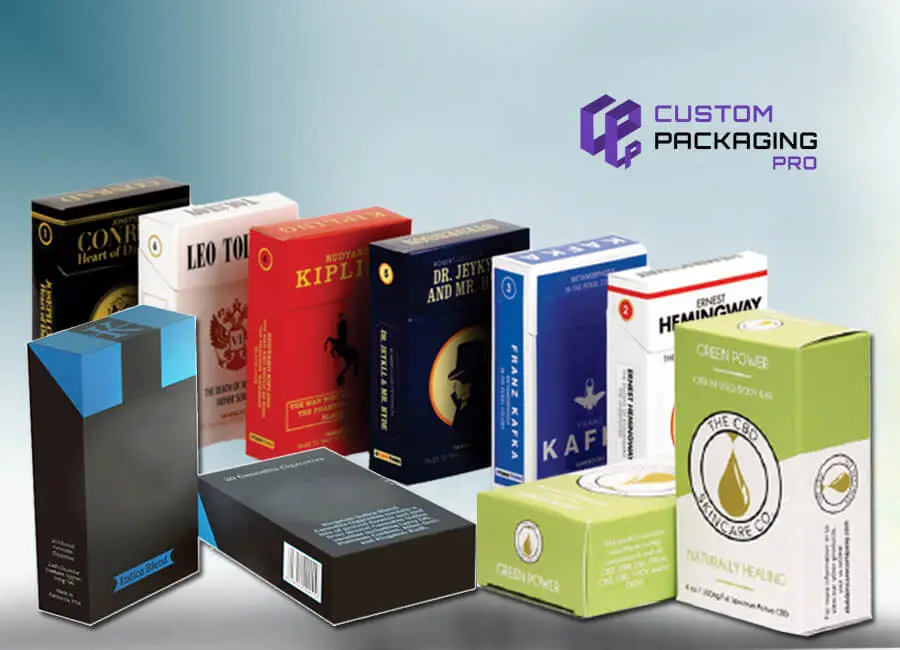
Barrier Technologies
Freshness and quality of the products being packed are the main guidelines for tobacco package design. The importance of these technologies can be explained using the example of modern barrier technology, which offers extended life cycles and superior product safety. Some noteworthy advancements include.
- They offer superior moisture and oxygen protective qualities which stop the product’s degradation.
- Supply of oxygen scavengers or antimicrobial coatings helps sustain the quality of the product.
- Customizing gas compositions within the packaging to prolong the product life and maintain freshness.
Smart Packaging Solutions
The presence of smart technologies in tobacco packs has provided new opportunities for consumer engagement and product tracking, especially in the design and features. All RFID tags, NFC chips, and QR codes or developing, can blanket traditional packaging with interactive features. To understand the role smart packaging plays, let us look at the hows of it in the following paragraphs.
In the world market of the 2024 global tobacco packaging, the regional section is involved.
Examining the 2024 global tobacco packaging market through a regional concentration presents valuable insights into diverse dynamics positioning this industry in different regions of the world.
North America
This particular area has witnessed some impressive trends that have contributed to the source of sustainable and environmentally friendly packaging solutions within the tobacco packaging market. In connection with growing awareness of ecological problems, corporations depart for biodegradable materials and innovative designs to satisfy nature lovers. Health warning regulations and the packaging regulations that are put in place also make a huge contribution to defining and adjusting the market environment.
Europe
Europe has been a global innovative pioneer in stringent packaging regulations for tobacco, including standardized packages and graphic warnings. This regulatory environment has compelled companies to invest in premium packaging technologies by keeping their brand’s identities as well as complying with legal basics. Companies also want to develop their offerings and thus will strive to stand out from the competition through packaging designs and materials suitable for a variety of consumer segments.
Asia-Pacific
The Asia-Pacific region remains a major place for tobacco products nowadays which means the demand for packaging solutions is still growing. Those market drivers that are majorly influencing this market are increasing per capita incomes, growing urbanization, and a transformed lifestyle. Nevertheless, regulations perceptibly diverge in countries: within some, there are tough regulations on packages’ design and advertising. Such distinctiveness requires pragmatism from companies of the same region.
Latin America
The packaging market in the Latin American region is a blend of prospects and problems, which requires adaptable and innovative approaches for the future. Whilst the demand for tobacco is fairly steady in some countries, there are other countries where a change towards reduced consumption is beginning to take place as a result of heightened health awareness. The adoption of technologies such as reductions in head sizes and value-added features is one of the ideas that companies use to cut their market share.
Middle East & Africa
In this area, there is an extremely dynamic and intricate environment of the market, characterized by cultural, economic, and regulatory factors. Smoking habits are all different and this is especially true for countries with increasing trends, whereas some experienced an opposite effect – smoking levels have declined over there., then comes the packaging conditions that are similarly diverse and range from the minimum requirement to more severe rules. Customization according to local likings and penetration of the regulations is a crucial task for companies that do business in this sphere.
Navigating the Waves The Continuous Approach of the Tobacco Industry
The consumer products field is hardly vast enough to be seen close enough, but for tobacco – a premise that provoked more questions and curbed discussion – not many items could be given a place. The Tobacco industry has on a large scale been a leading force in the world ever since, facilitating and desiring economic and cultural growth while acting as a hindrance to the public health sector. However, in the last few years on the regulatory side, there have been some key changes, health concerns have also come to the surface, the trends among young adults have shifted and therefore, the messaging towards youth has become more compelling.

Regulatory Changes
Over the years there has been a major shift in the period of the tobacco industry. Now it has been followed by a wave of regulatory changes aimed at reducing the rate of tobacco use and increasing public health. Different government bodies around the globe apply diverse regulation architectures such as curbs on advertisements, plain packaging legislation, and increased excise taxes on tobacco products. These stores help producers but on the other hand, they also sway the demand from consumers and their profiles.
One can mention the ‘World Health Organization’s Framework Convention on Tobacco Control’ (FCTC) pioneer initiative for a global campaign against tobacco addiction. The FCTC parties have all pledged to introduce provisions such as a smoke-free policy and health warnings for tobacco products.
Health Concerns
Public support for health causes may be a main topic for the public discourse. A connection between smoking and different scary diseases was well-established scientifically for several decades. These diseases include lung cancer, heart disease, and various respiratory disorders. On the other hand, secondhand smoke is also dangerous to non-smokers, this exacerbates the situation and renders it urgent for progressive public health measures to be put in place.
In the past few years, the accumulation of evidence on the probable health consequences of new types of tobacco products including heated tobacco, vape pens, and others has brought new confronting issues to the forefront. The deficiencies of E-cigarettes do not preclude the fact that they may be considered less harmful than traditional tobacco products. Many scientists, policymakers, and public health experts are still engaged in the debate on the comparative risk of these alternatives and on the proper containment measures to minimize harm to the public.
Smoking Trends
Given that the smoking landscape has undergone plenty of major changes during the last decade it is impossible to deny that the smoking patterns have experienced various excitement and deterioration. In many developed countries where high income now commonly applies, smoking rates have gone on a stable downward trend, provoked by campaigns and awareness-raising on smoking harms, as well as regulatory policies of this type. Nevertheless, differences are observed and they manifest among individuals belonging to the lower economic classes and those with mental health records who demonstrate higher smoking rates.
Therefore, while in some areas, mainly in the lower and middle-income nations, smoking is still quite widespread, others like high-income nations have reduced this rate significantly. The factors that influence this are related to marketing by tobacco companies, a real lack of cessation resources, and the culture that prevails around smoking.
Anti-smoking Campaigns
Media anti-smoking campaigns are a powerful instrument serving to change people’s minds and customs toward smoking tobacco. These campaigns enlist a wide array of tactics including educational materials that will shed some light on the health dangers of smoking to advocate for tobacco policy changes like bans on smoking as well as increased taxation.
Social media and digital platforms have reflected on the roles of the armies in the tobacco battle. These channels are now used by anti-smokers as weapons against tobacco. Marketing decisions such as building a partnership with a social media influencer, sending targeted messages through social media, and creating interactive campaigns all aimed at engaging the youth and directing them to a smoke-free society.
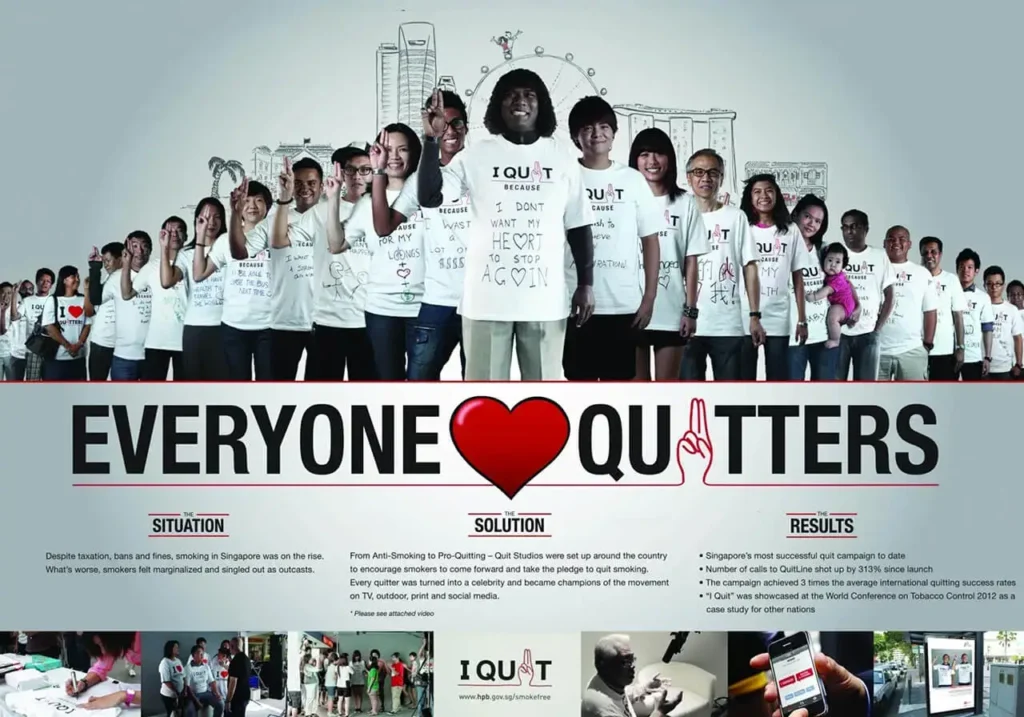
Navigating the Regulatory Seas The tobacco industry is unable to meet the challenges of compliance with tighter regulations
Before smoking becomes a part of people’s lives, the tobacco industry is shadowed by government policies, packaging, and plain packaging laws. These specific actions, intended to support and secure the public’s health and to decrease the consumption of tobacco, present unique chances and challenges for cigarette makers, and also for consumers.
Government Policies
To date, political authorities of the world have launched many policies whose purpose is to reduce the spread of tobacco and thus improve public health. These policies include taxation, being under the age limit as well as smoke-free laws. Moreover, they also include the restriction in advertisements. The main aim is to motivate people not to start smoking, add those who already smoke to the benefit of quitting, and try to reduce the damage that smoking creates to the health and well-being of the community.
In particular, taxation policies are probably the most important instrument to make people spend their money in a particular way they want to. Higher taxes on tobacco products can push prices up as high as they go and this way they become less accessible, which encourages a change in tobacco consumption. Furthermore, revenues raised in the form of tobacco taxes may be endorsed for public health programs, tobacco control endeavors, and smoking quit programs.
Packaging Regulations
Tobacco packaging regulations are an indispensable component of the tobacco control strategy as they deal with how tobacco products are branded, designed, and presented to consumers. Such legislation mostly covers the standards of designs or labels for packaging as well as health warnings.
The adoption of specific laws is the key trend in packaging operations regulation. It means standardized or plain packaging. The regulatory due to which plain packaging legislation requires each tobacco product to be sold in unbranded packages without trademarks, colors, or marketing imagery present. In contrast, packs are, instead, accompanied by large graphic warnings and yet, simple text with the message of smoking’s hazards to health.
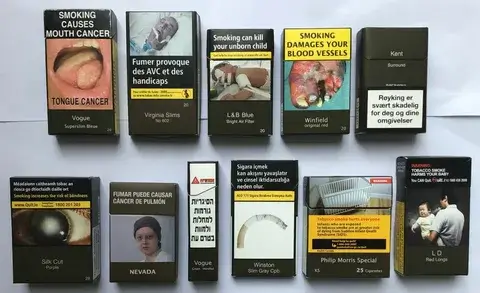
Plain Packaging Laws
Plain packaging laws have been in place and at the forefront in some countries as other countries now follow and some are looking to embrace it. Australia was a part of the elite country that was the first to introduce plain packaging for tobacco products in 2012. Countries such as France, the United Kingdom, and Canada emulated this initiative after introducing such a plain packaging policy.
While plain packaging detracts from the perceived glamour of using tobacco products, certain detractors of the fact that using tobacco products is because it also conceals a lot of misleading marketing strategies which can lead to indoctrination of the public into unhealthy lifestyles. They refer to the studies that plain packaging might not just decrease the number of smokers but also the number of teenagers who are very vulnerable to peer pressure. Global leaders in the process are France, the United Kingdom, and Canada who have adopted their plain packaging law as well.
Cigarette Packaging Machine Manufacturers
Molins PLC (U.K.)
Molins is a renowned manufacturer of tobacco machinery and tools which includes the packing process of the cigarette and filling the packing boxes. These provide optimal packaging solutions for the tobacco industry elements on its requirements.
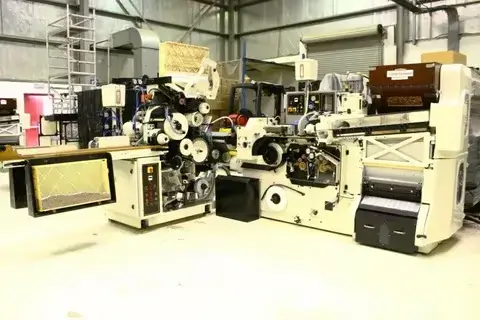
Hauni Maschinenbau AG (Germany)
Hauni is a well-known company in the tobacco machinery business, and its portfolio includes many products i.e. packers and auto-cartons that facilitate the production and packaging of cigarettes at high speeds.
G.D. S.p.A. (Italy): G.D. Packaging machines are specifically made to fit the needs of the tobacco industry which includes cigarette packers, overwrapping machines, and the innovation of machine design concerning individual packaging.
Decouflé S.A. (France)
The qualified laborers of Decouflé bring innovations in designing and manufacturing cigarette packaging pieces, which offer both traditional and new package design choices to tobacco producers worldwide.
For Meccanica (Italy)
Meccanica, as a central figure, contributes to the design of machines used for manufacturing the packaging of cigarettes, providing customers from around the globe with reliable, high-quality products.
Conclusion
The tobacco packaging market is a change reshaped by market trends, consumer behavior, regulatory programs, and technological innovations. Looking up to the future, an approach that includes innovation, ecology, and trends providing customer satisfaction is the main issue behind business growth and adjustment to the market conditions.








